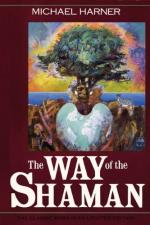
|
1. Prompted by similarities he found in books and accounts about shamanic experiences, what did Harner decide to do in order to learn more about shamanism?
Harner decided to live among tribal people and learn about shamanic ways directly from them. He lived with and learned from the Ecuadorian Jivaro, among other tribes.
2. Describe Harner's experience of spiritually going to a cave beneath a waterfall with a Jivaro shaman.
Harner finds himself in the cave in his quest for spirit helpers. The sound of rushing water in the cave is very strong. While there, he experiences a sense of calm and the feeling of flying inside a mountain. He enjoys it so much that he regrets having to leave.
3. Why does the author find it encouraging for Westerners that not all tribes use drugs in their shamanic practices?
Harner notes that Westerners will be relieved to find that they can participate in shamanism without having to take part in ceremonies that involve drug use. He points to groups such as the Lakota Sioux and the Coast Salish tribes who reach altered states of consciousness without using hallucinogenic substances. Harner's exercises show how to access shamanism without resorting to drugs.
(read all 60 Short Essay Questions and Answers)
|
This section contains 3,331 words (approx. 12 pages at 300 words per page) |

|




